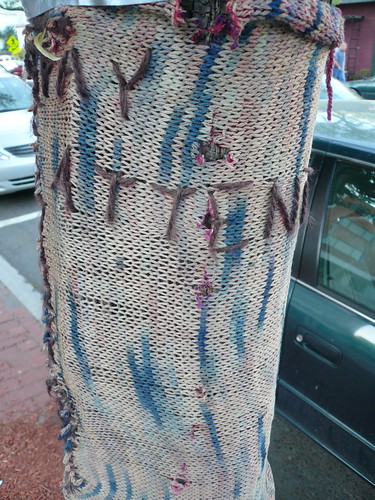Friday, June 20th, 2008...3:19 pm
Journalism and annotating space
In the journalism world, there is a tremendous emphasis on hyperlocal news media — that is, reporting on issues that are relevant in a very small geographic area. To what extent can we see this style of journalism reflecting back on the spaces it covers?
The bus schedule, taped to the bus stop’s signpost.

Restaurants post favorable reviews in their windows. Beyond advertising and good press, what other civic information from newspapers can be added onto the places they describe?
- Schedules of events that happen regularly. Or if the event is well known, list the deviations instead.
- Reminders of what’s coming to the space. X marks the development site.
- Reminders of what’s been in the space. Each of these silhouettes represents a cyclist hit at this intersection. This footprint marks where the demolished building stood.
- Highlight a path: this way to Davis Square.
- Post who’s in charge, how to contact them, and what they’ve done in the past. The Alderman for this district, X, is responsible for: …
RFID promises to make place-specific information accessible on a large scale. But “soon” has been “soon” for over 4 years now, and we aren’t seeing any widespread adoption in civic settings. And it won’t be a technology accessible to those who would benefit the most from that type of annotation.
For now, it’s the arrows spray-painted on the ground and the fliers taped on telephone poles that are the most relevant and useful. Decidedly low-tech, but the methods of getting them up don’t have to be.
“Pay Attention,” says this guerilla crochet project.
— Matt Hampel

Comments are closed.